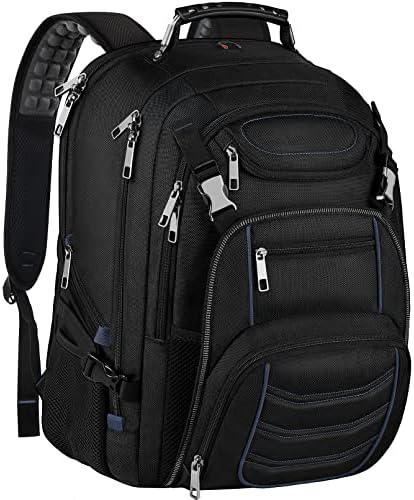From spot market rates to repair and labor costs, stabilization is the theme for this week’s Economic Trucking Trends. Spot market rates may have bottomed, analysts report, volumes held steady, and even repair and labor costs are normalizing.
Continued elevated Class 8 truck production could slow the pace of recovery, but trailer demand is softening.
Let’s get into it.
U.S. spot market rates stabilize
May marked the second straight month of stabilized truckload spot market rates in the U.S., according to DAT Freight & Analytics. The DAT Truckload Volume Index (TVI) – an indicator of loads moved during a given month – increased for van (+5%), reefer (+5%), and flatbed (+7%) freight.
It was the first time since 2019 that truckload volumes increased from April to May, which is an encouraging sign.
“This was the second-best May on record for van and reefer freight, according to our TVI,” said Ken Adamo, DAT chief of analytics. “There was demand to move seasonal goods at a time when the truck supply on the spot market tightened due to the International Roadcheck inspection event, the Memorial Day holiday, and general carrier attrition.”
Rates held more-or-less steady in May. Spot market van rates dropped one cent to US$2.05 a mile, reefer rates rose three cents to $2.44, and flatbed rates fell two cents to $2.65/mile. (All figures in US dollars.)
Contract rates contract
The news wasn’t as encouraging for those hauling contract freight, which generally lags the spot market. National average rates for contract loads fell six cents per mile to $2.62 for van loads, 10 cents a mile to $2.91 for reefers, and three cents a mile to $3.30 for flatbed loads.
“Shippers are taking advantage of abundant truckload capacity to establish new contract rates at substantial savings compared to 2022, and to make strategic use of the spot market,” Adamo said. “We expect these trends to continue through the end of the year.”

Canada’s spot market bounces
Closer to home, Loadlink Technologies reported a notable recovery in May spot market volumes, with loads up 22% from April. But capacity is also on the rise, with a 16% jump in equipment postings, reaching record levels.
The truck-to-load ratio increased to four trucks posted for every load on Loadlink, the company reported. It’s a decrease from the 4.16 trucks per load seen in April, but the ratio is up 138% year over year. A year ago May, there were just 1.68 trucks available per load.
Has the freight cycle bottomed?
Industry analyst ACT Research says April likely marked the bottom of the spot market downcycle, but near-term upside will be limited due to elevated Class 8 build rates.
“Spot rates rose in May, but strong new equipment production will slow the ascent initially. Class 8 backlogs are sufficient for a while but are starting to dwindle as order activity has declined with industry profitability,” said Tim Denoyer, ACT Research’s vice-president and senior analyst. “That spot rates have largely held onto the gains from Roadcheck suggests the freight market is close to the elusive balance, but the rebalancing so far has been mainly on the labor side.”
Regarding fleet capacity, Denoyer added, “Though equipment capacity is still growing, labor capacity is tightening as some fleets shrink and others exit. Aside from the pandemic capacity shock in April 2020, we are on track for a record contraction in labor capacity this year, which is key to the bottoming process.”

Trailer demand slowing
Preliminary trailer orders in May totaled 9,100 units, according to the latest data from ACT Research. That reflects a softening in demand, with orders 10% below April’s intake and down 54% year over year, though a seasonal pullback is not unusual this time of year.
“Seasonal expectations call for orders to continue their pull back in the coming months, particularly given near record-level order backlogs, as trailer manufacturers normally spend mid-year working down the backlog ahead of the next year’s orderboard opening in the fall,” said Jennifer McNealy, commercial vehicle market research and publications, ACT Research.
“Albeit against strong comparisons, demand is softening. In addition to the seasonally-anticipated slowing in orders, we’re starting to see increased and broad-based cancellations. That said, backlogs remain robust, so many fleets needing trailers remain in queue for orders already placed, with relative backlog measurements for most trailer categories still near the top of their target ranges.”

Parts and labor costs stabilizing
A Q1 benchmarking report from the Technology & Maintenance Council of the American Trucking Associations, and service management platform Decisiv, indicates that the costs of parts and labor are stabilizing.
“Fleets are weathering the impact of aging trucks and higher parts prices, and are addressing the need for technicians,” said Decisiv president and CEO Dick Hyatt. “The data that Decisiv collects and analyzes for the TMC Benchmark Report on Vehicle Maintenance Reporting Standard system level codes clearly indicates that service costs are more stable.”
But that doesn’t mean parts and labor costs are on the decline. Rather, the pace of acceleration has slowed. Costs rose only 0.7% in the first quarter, compared to an 8% surge the same period a year ago. Compared to Q4 2022, parts costs dropped 0.4% while labor costs rose 2.3%.
The survey also reflected a decrease in mileage, reflecting lower freight volumes.











